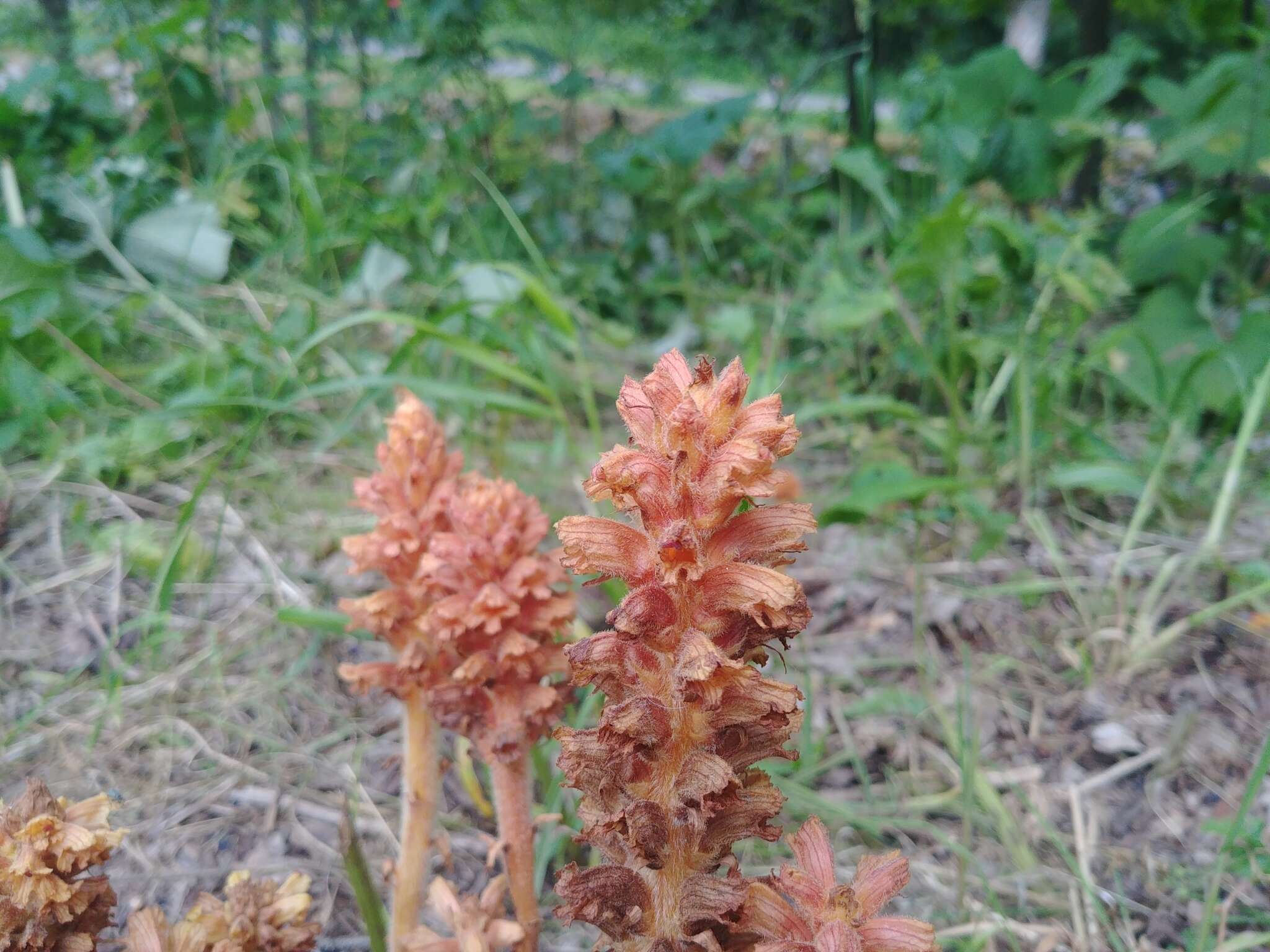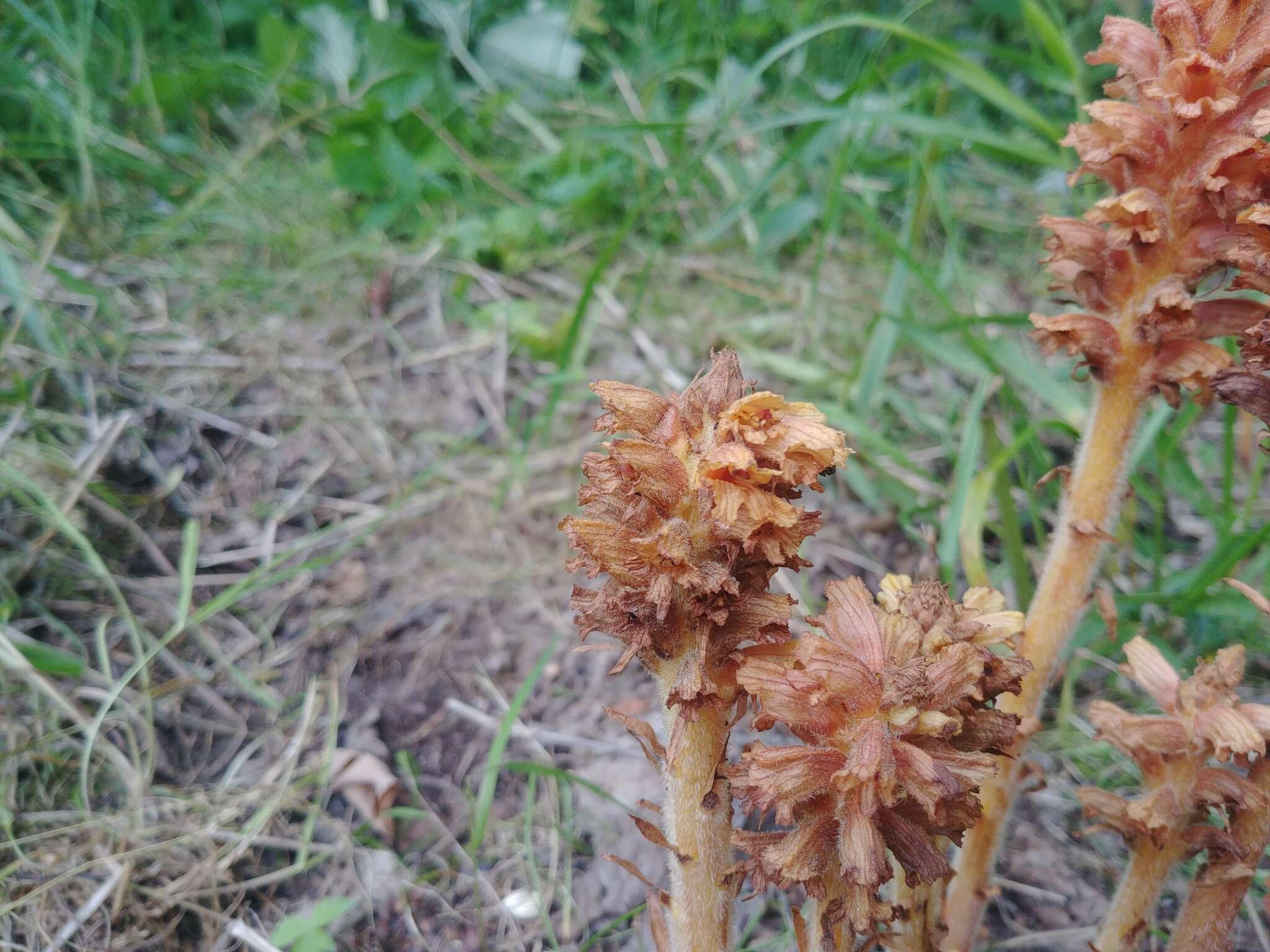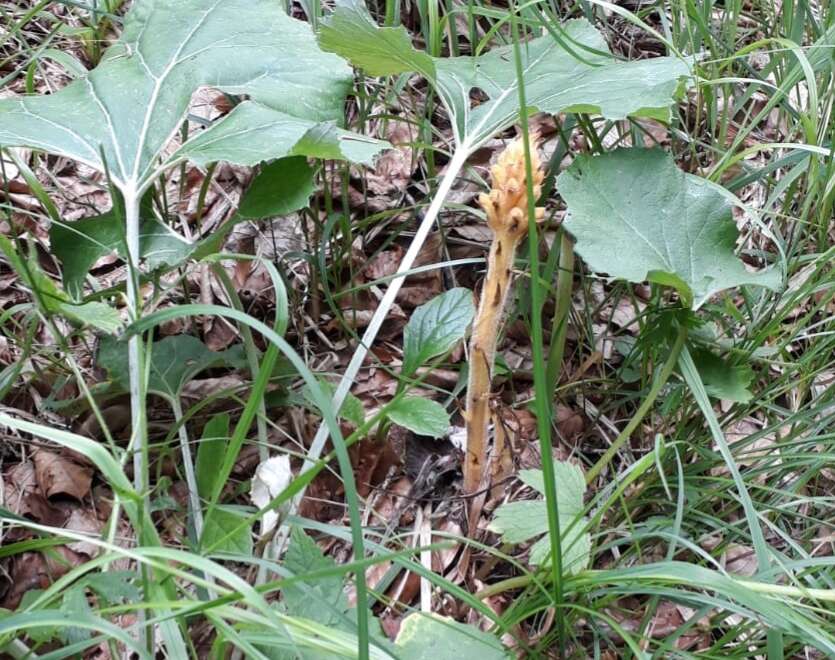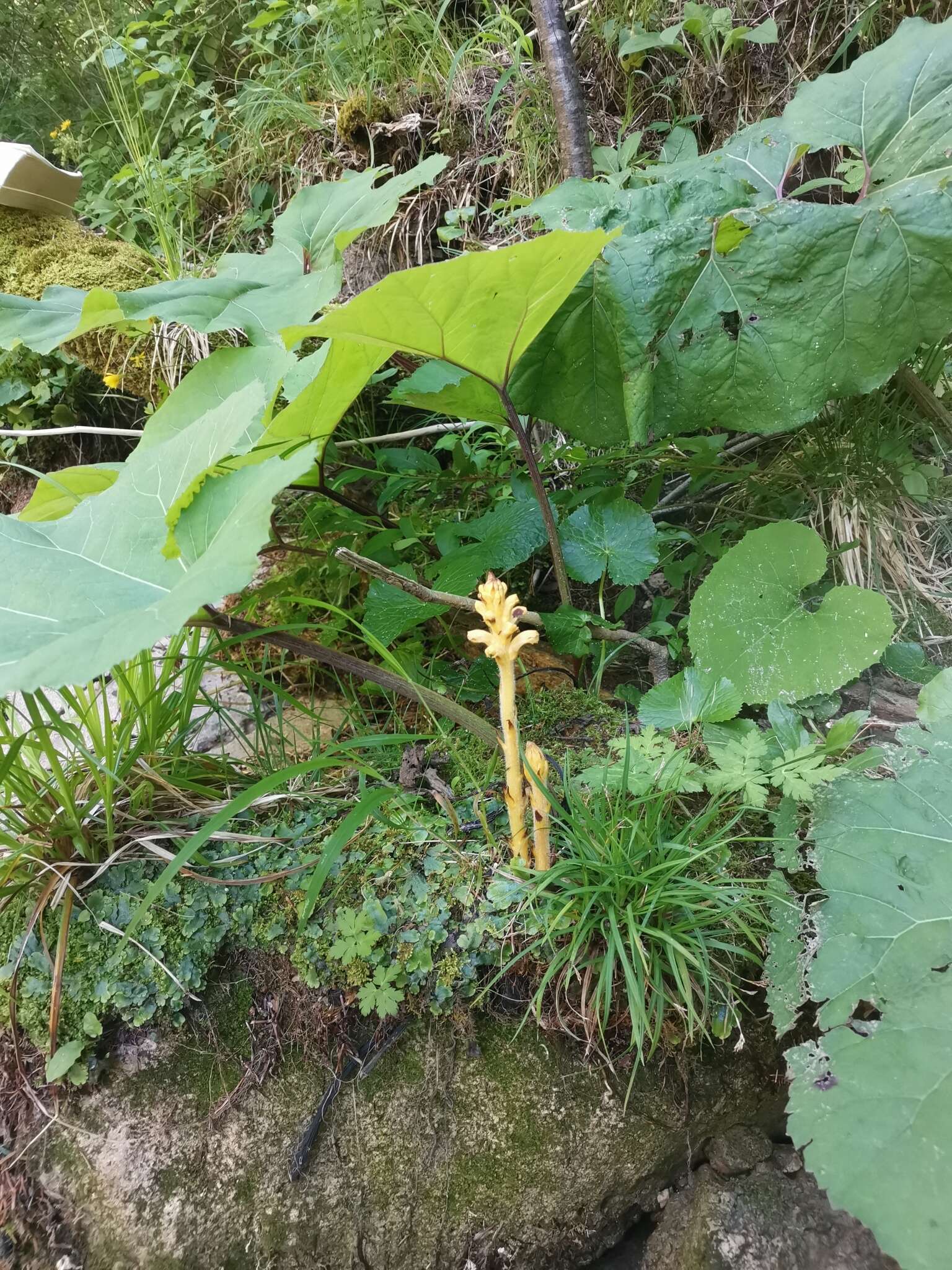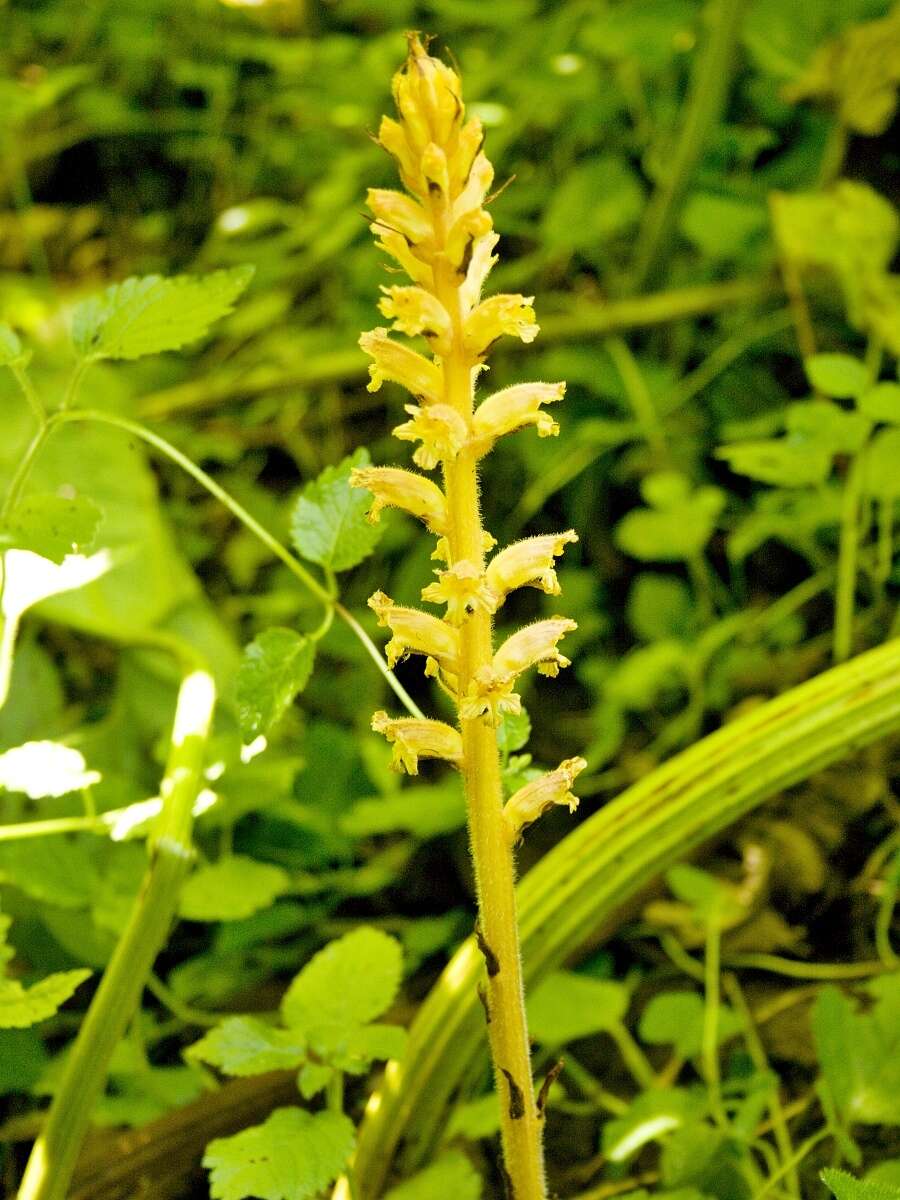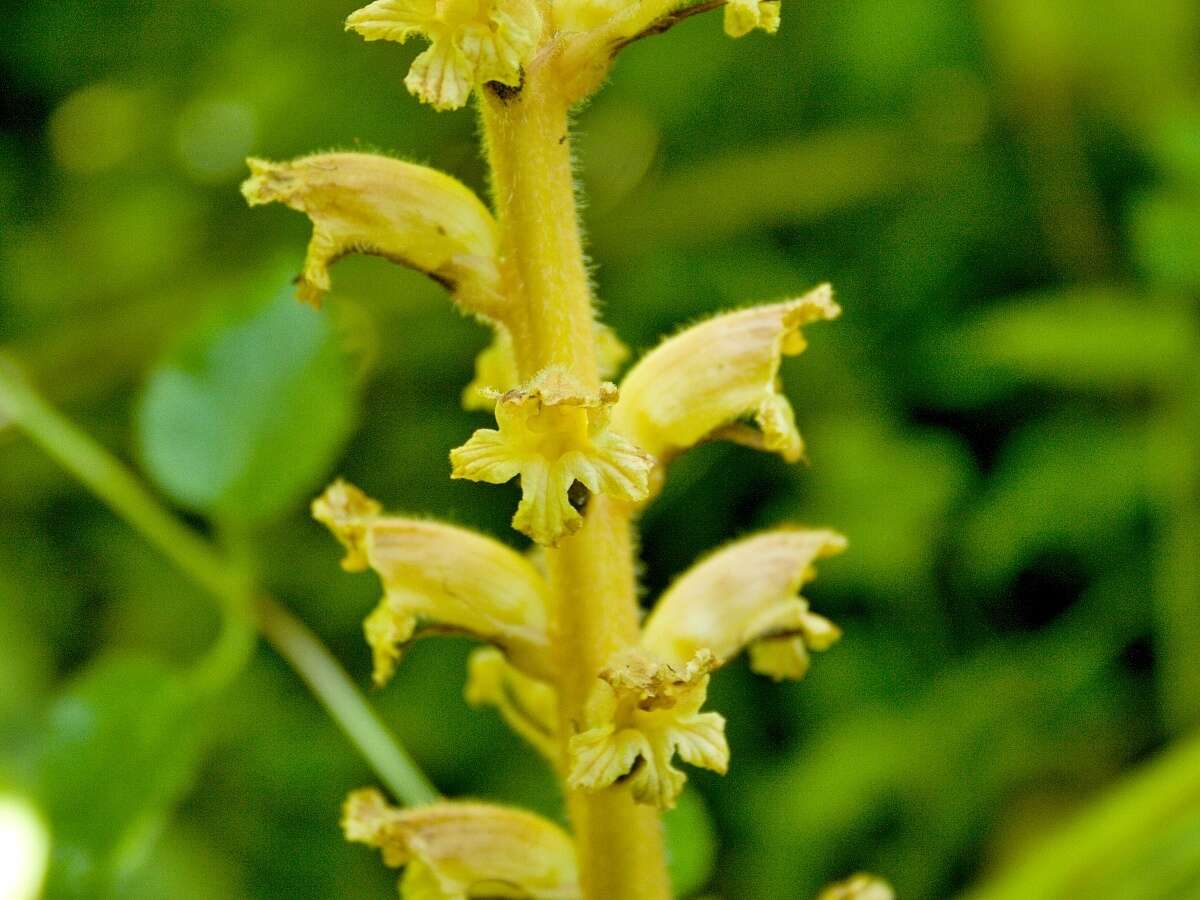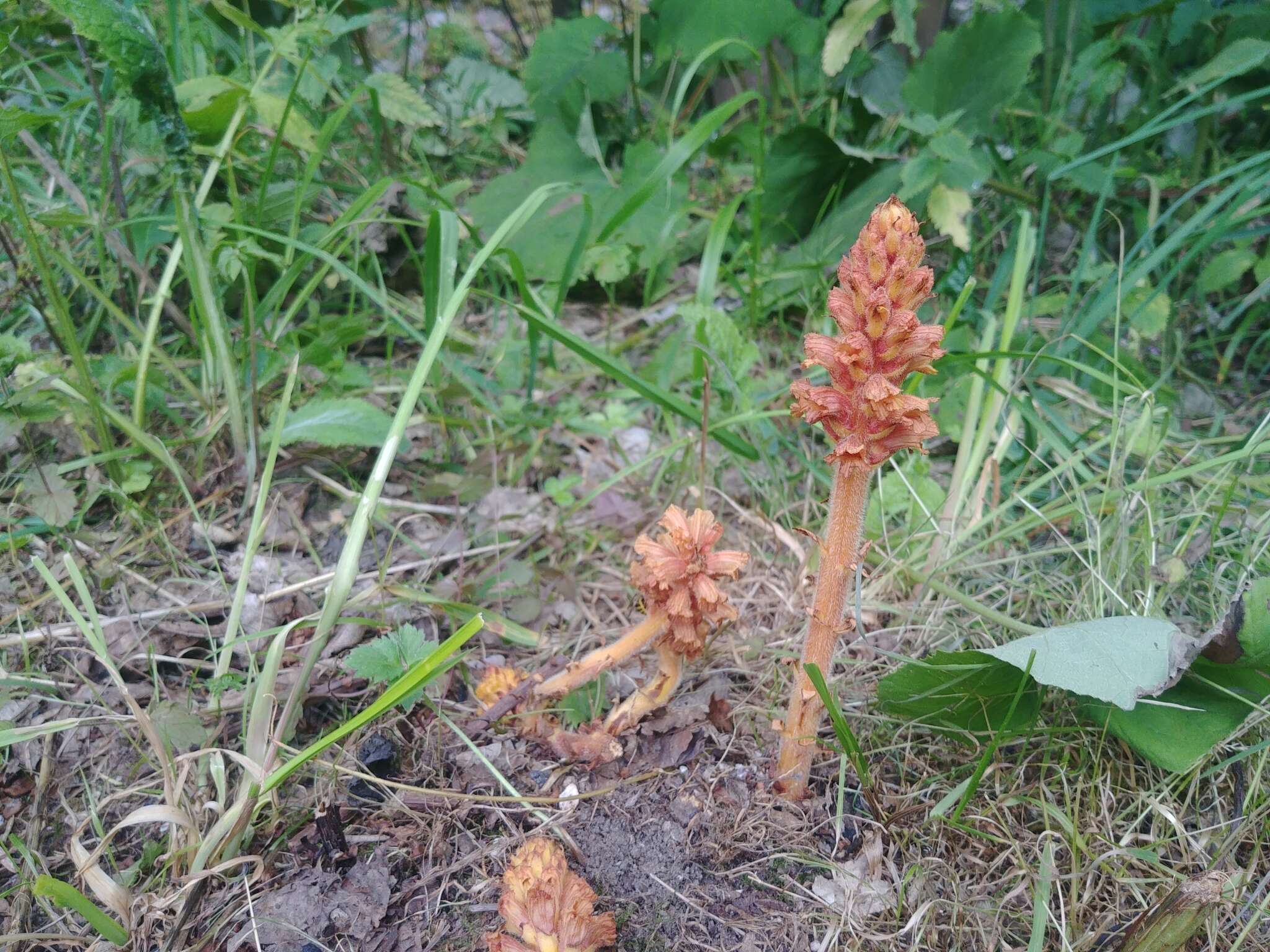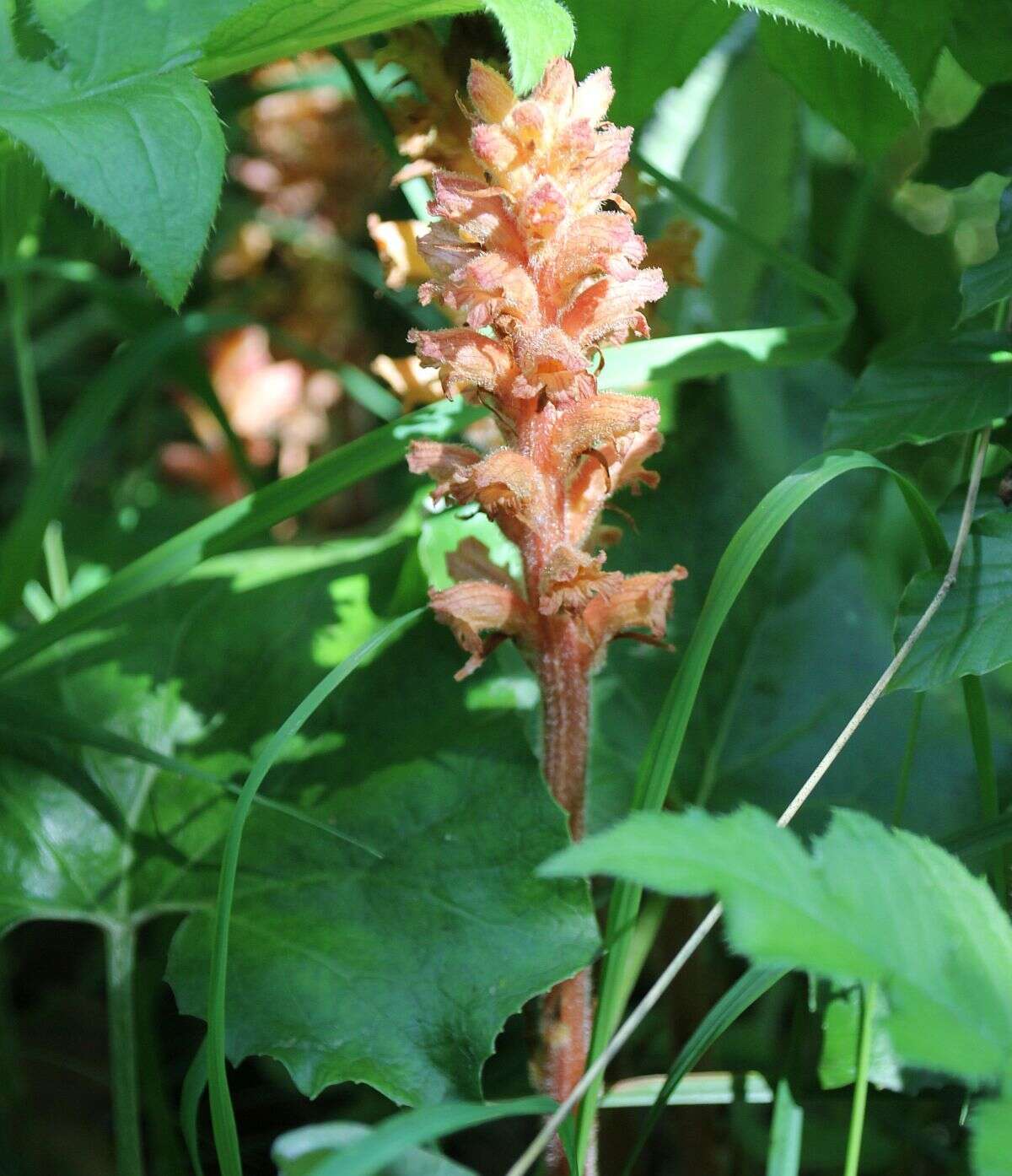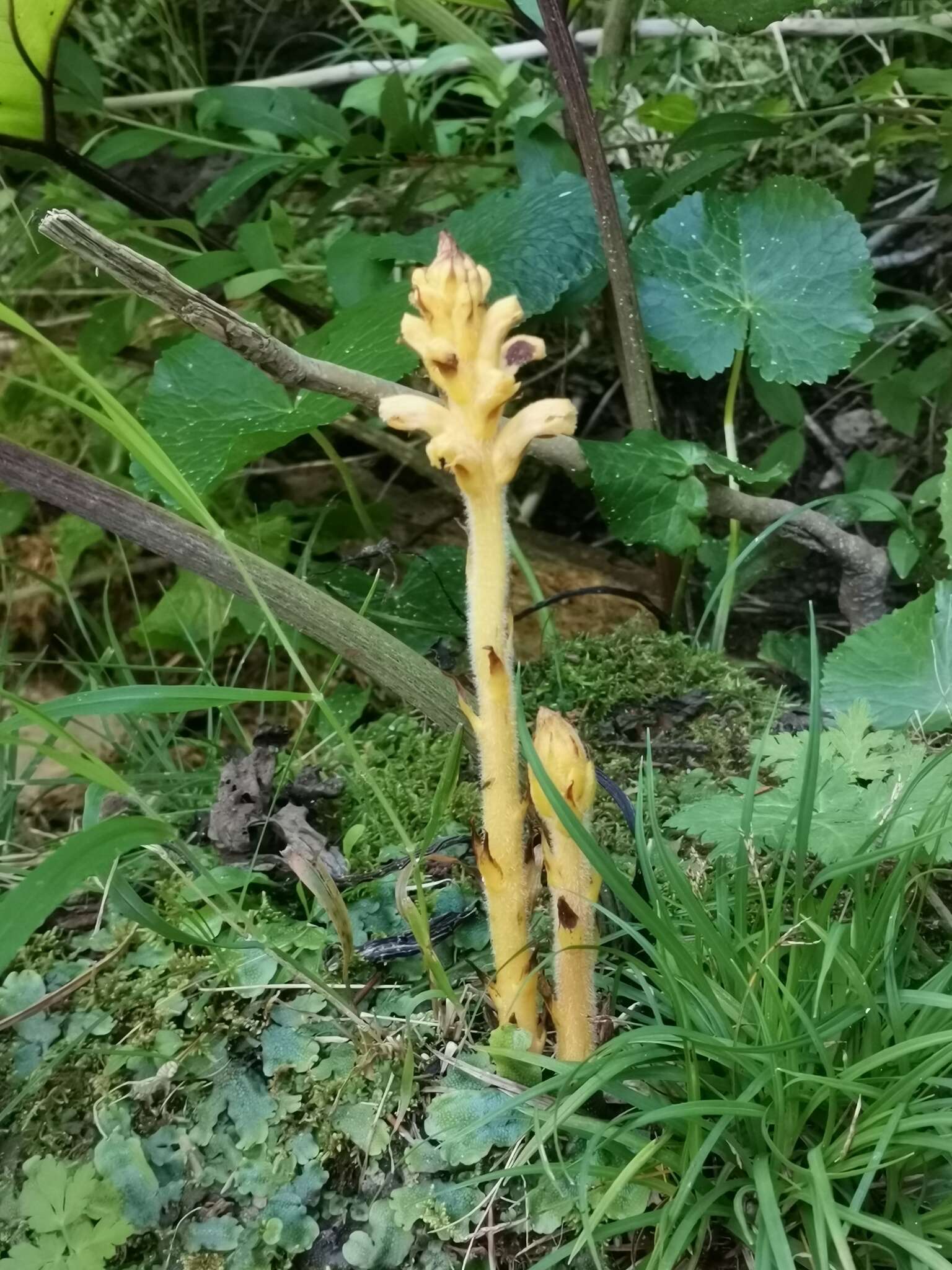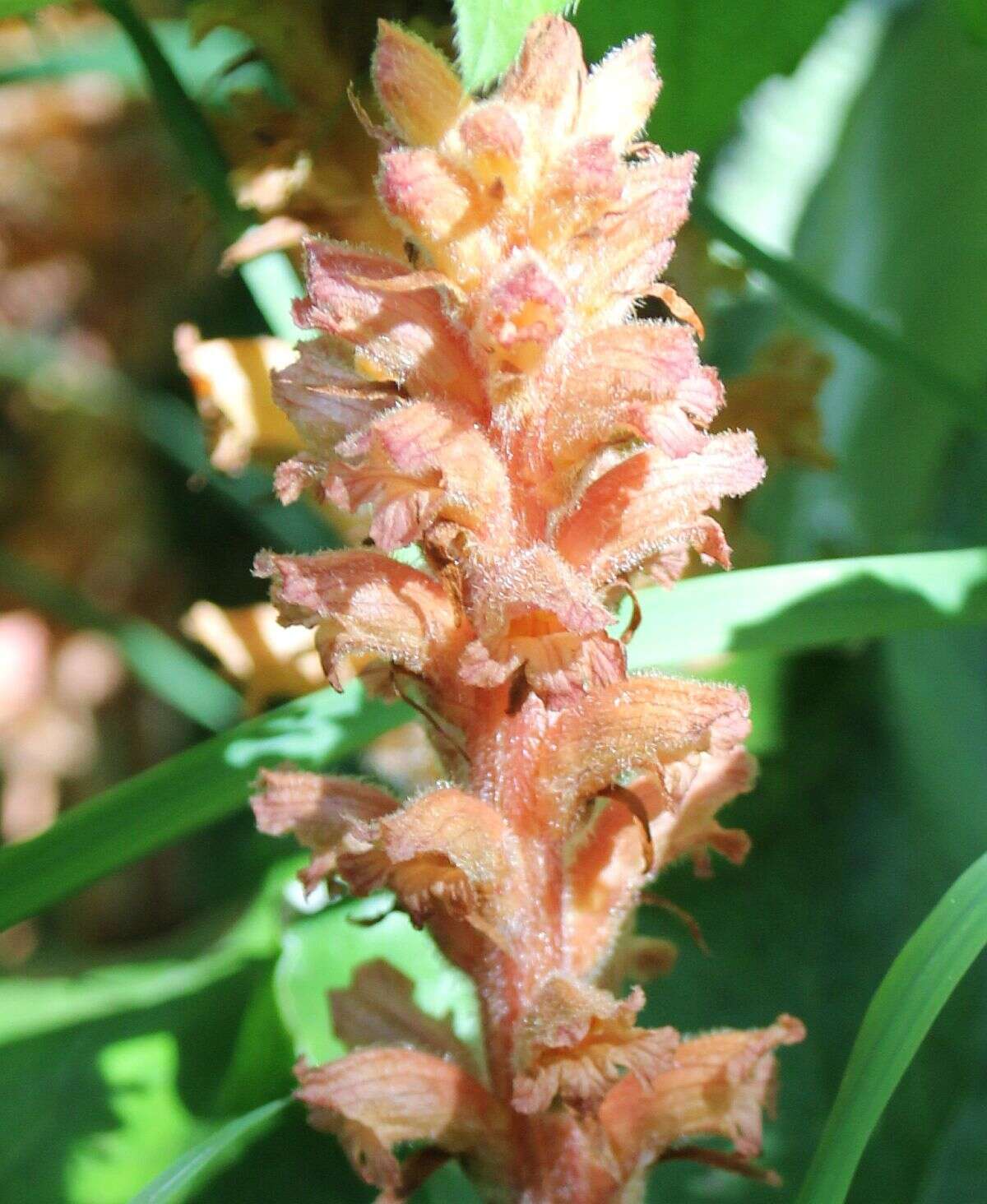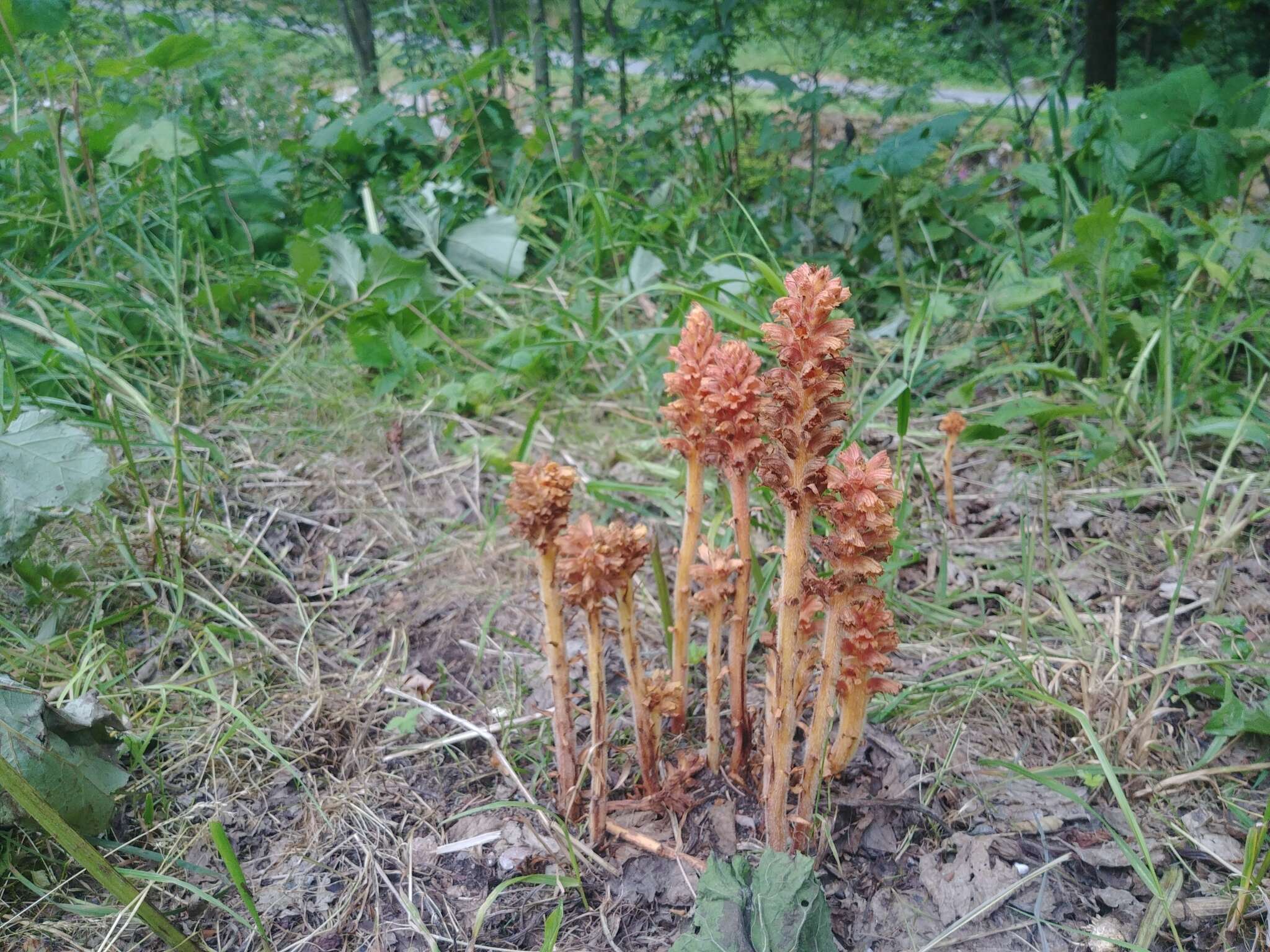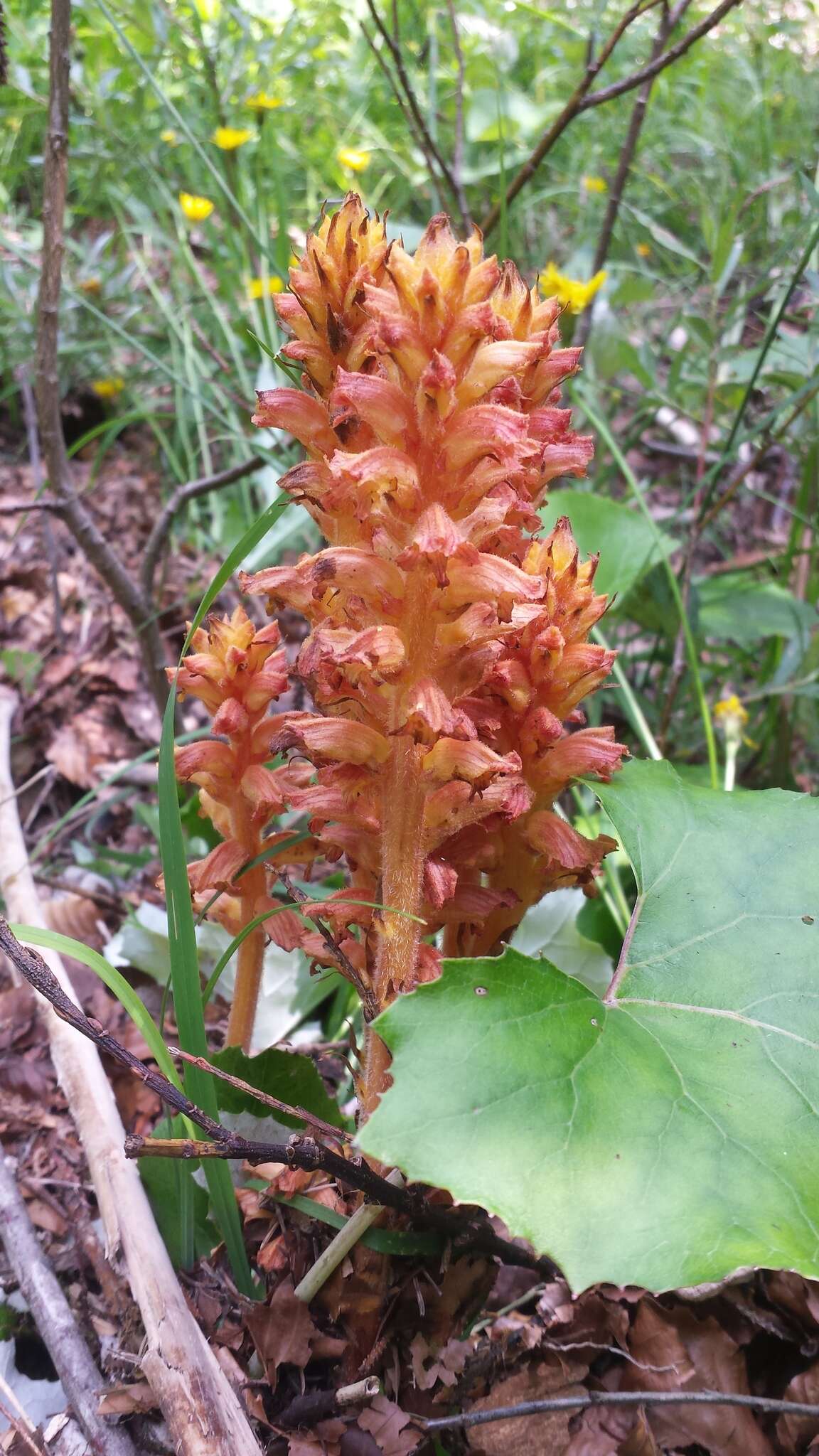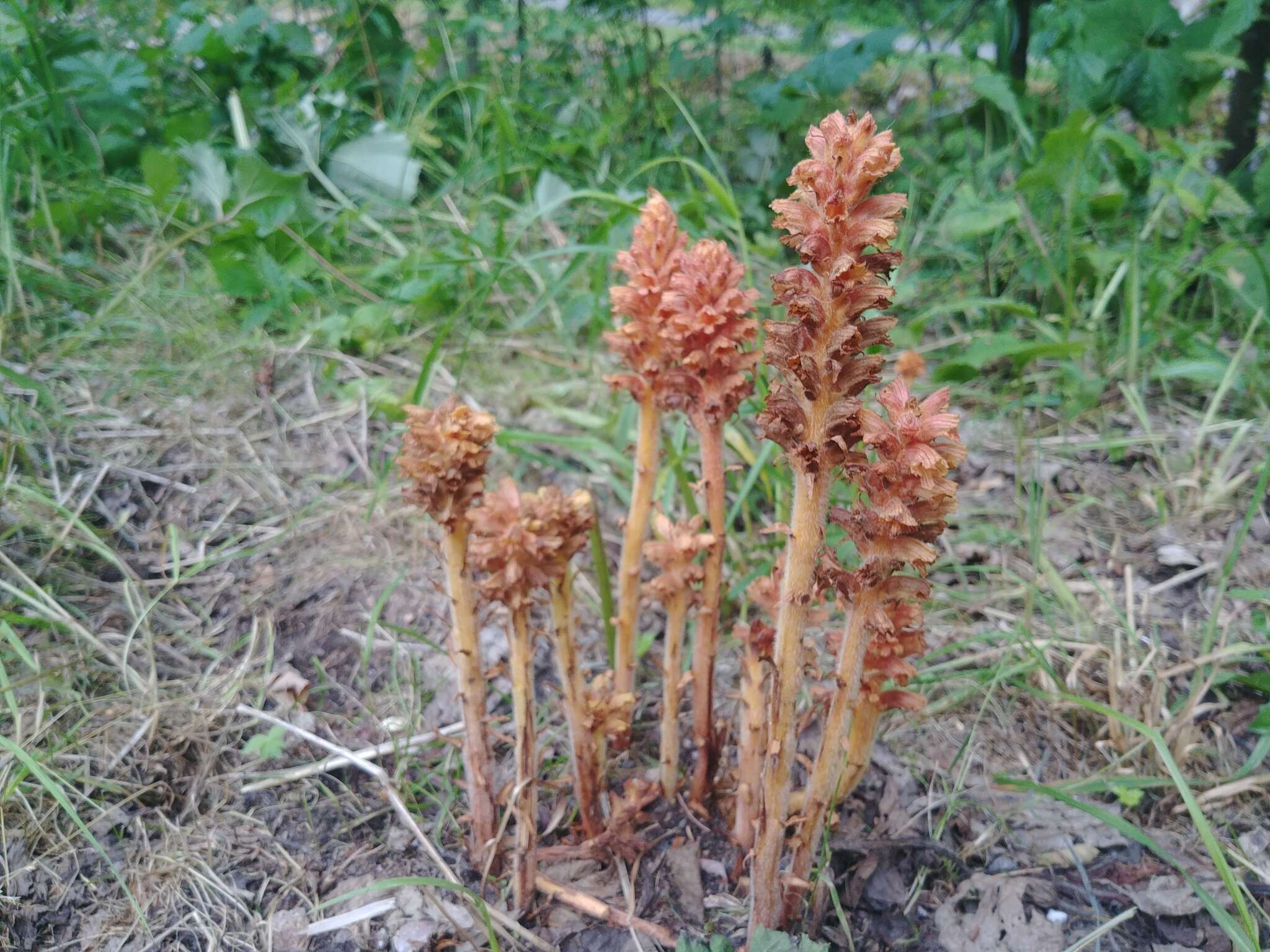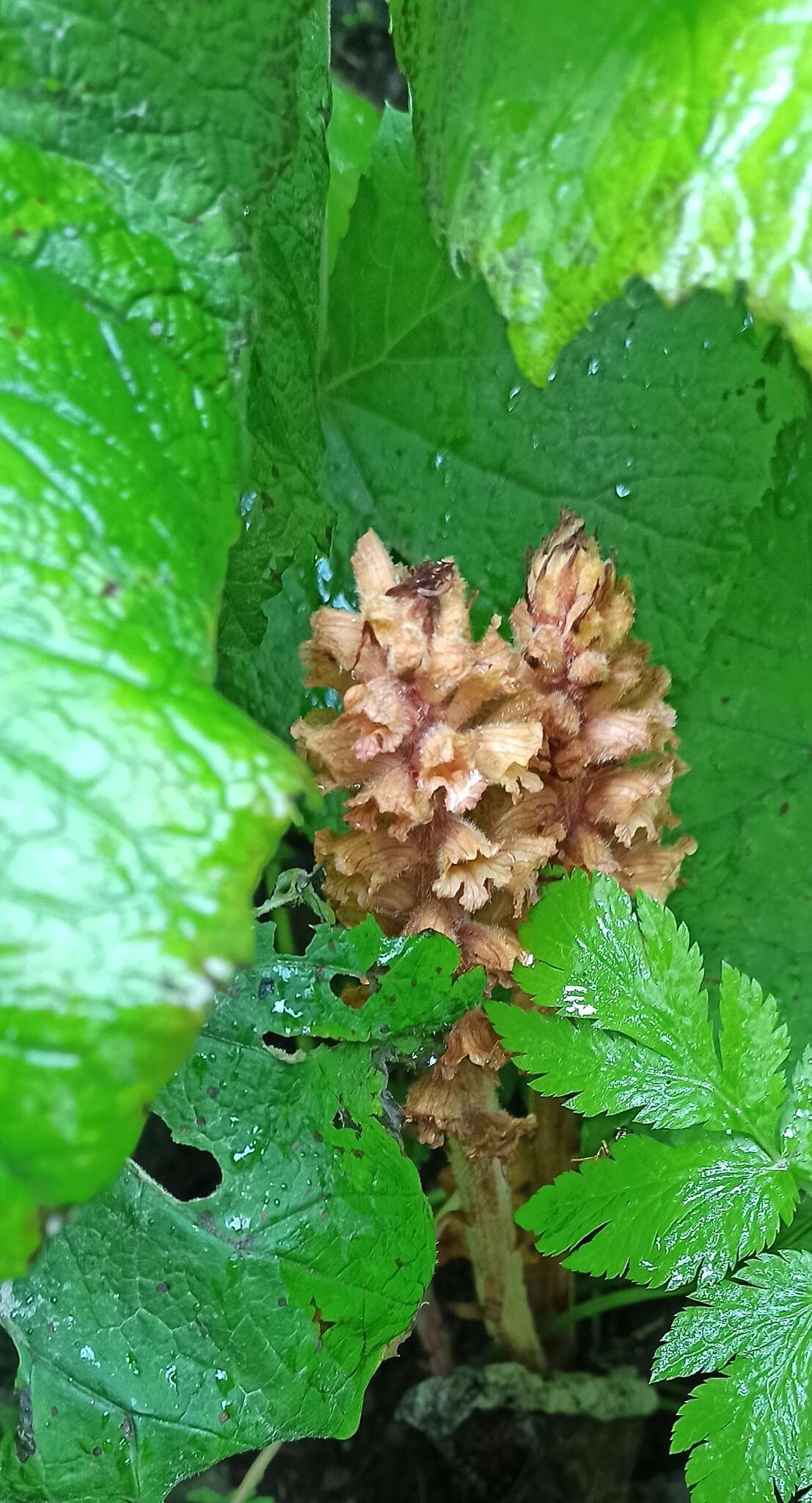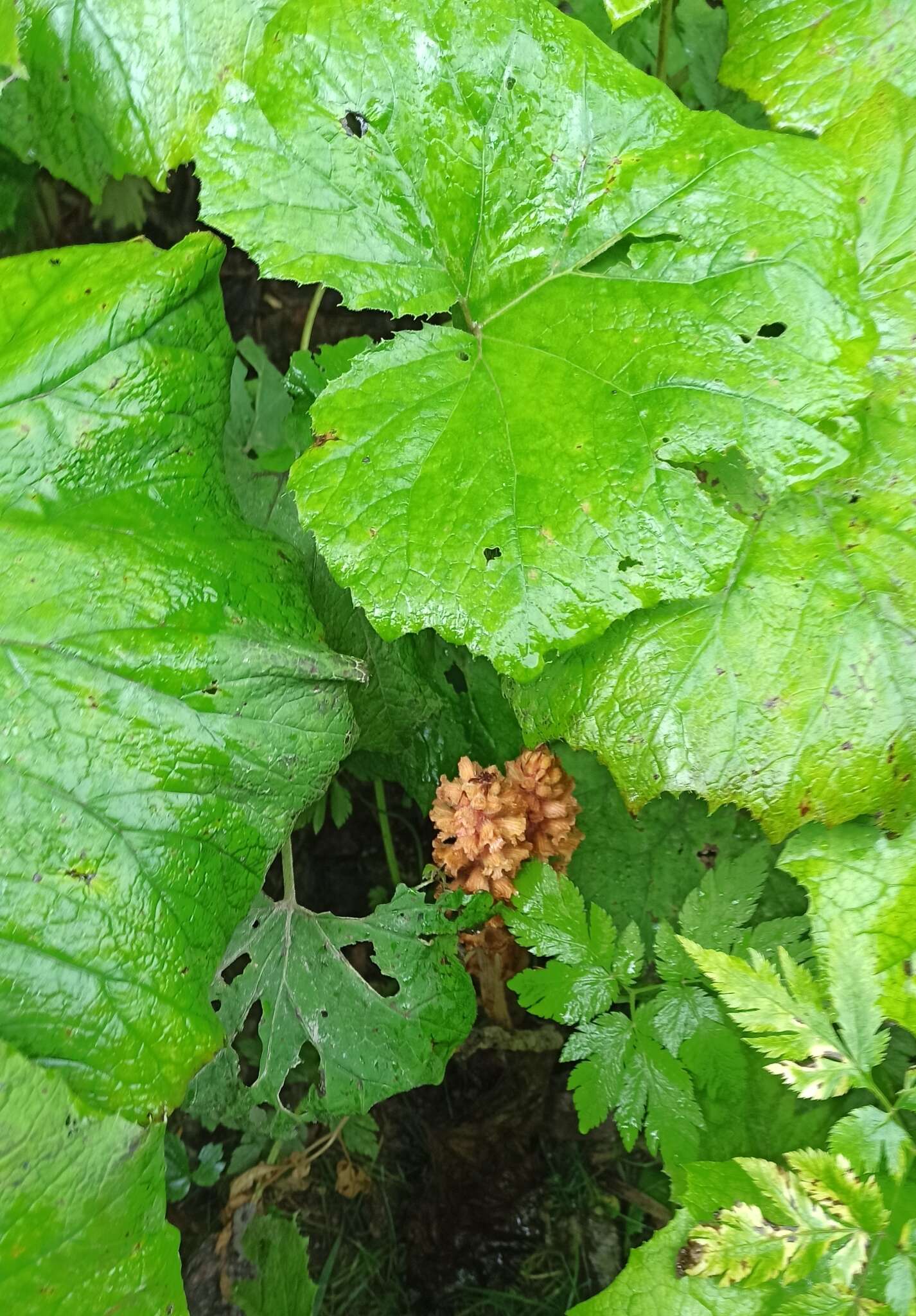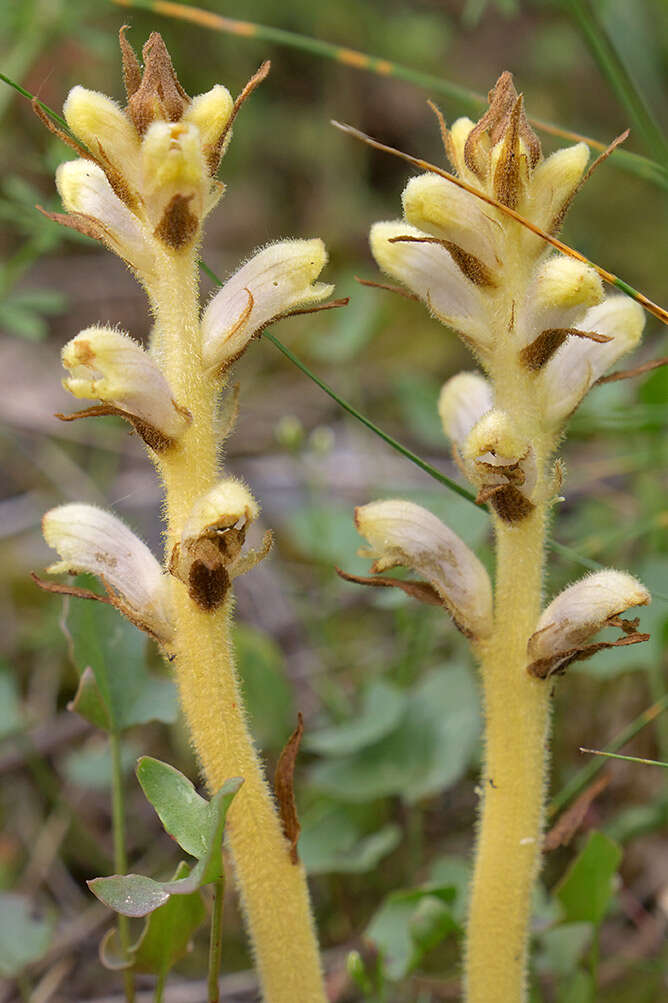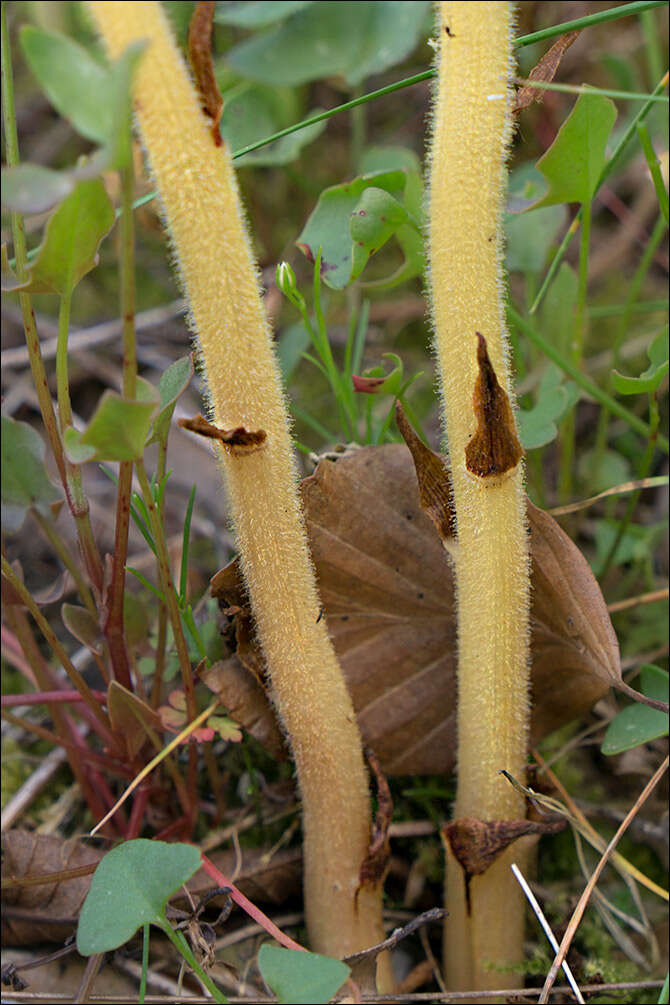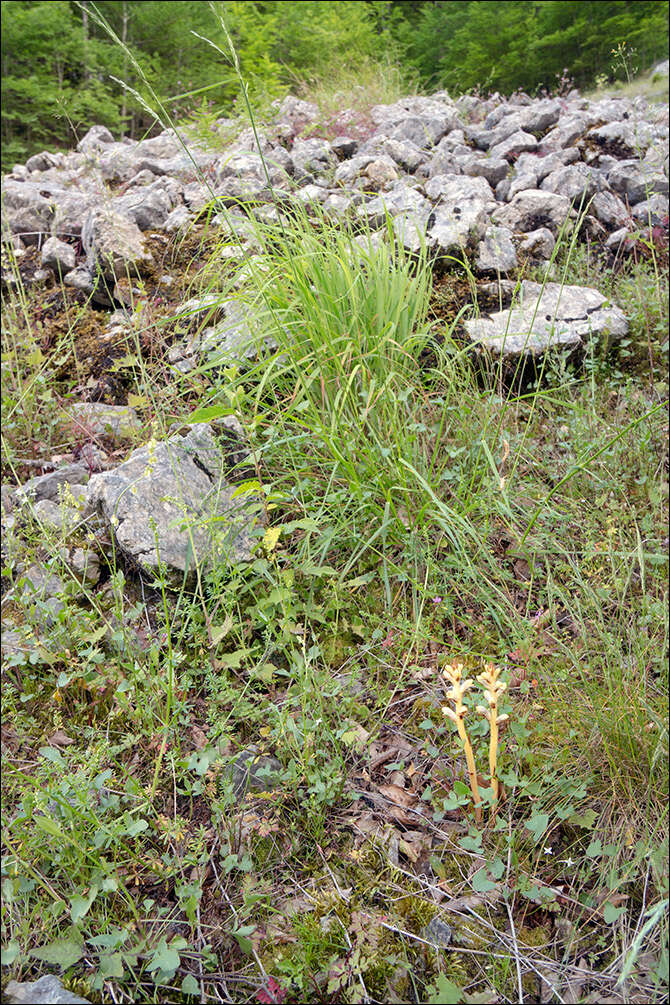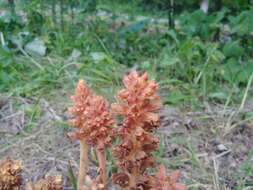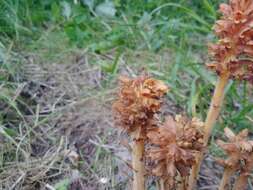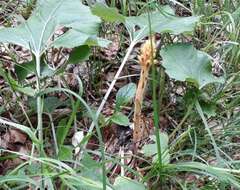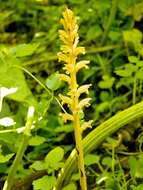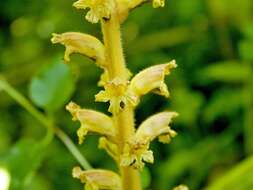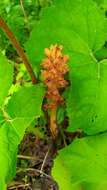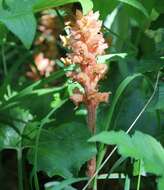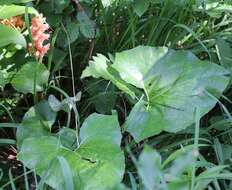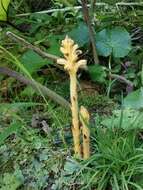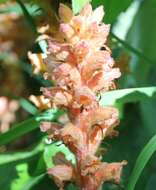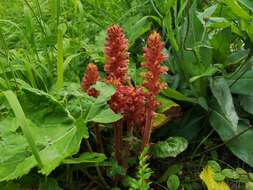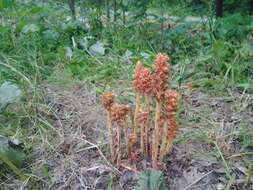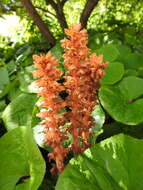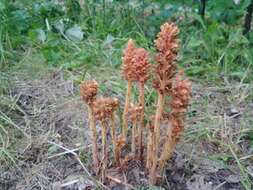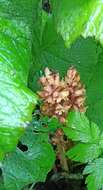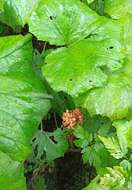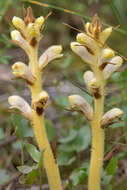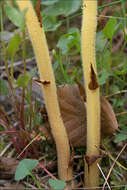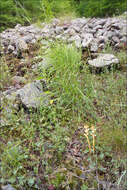Orobanche flava F. W. Schultz, syn.: Orobanche cicerbitae (Uhlich & Rtzel) TzvelevFamily: Orobanchaceae Vent.EN: Yellow Broomrape, Butterbur Broomrape, DE: Hellgelbe Sommerwurz, Pestwurz-Wrger, Pestwurz-SommerwurzSlo.: bledorumeni pojalnikDat.: 16.06.2019Lat.: 46.35710 Long.: 13.70252Code: Bot_1215/2019_DSC07896Habitat: steep short ravine, west-northwest aspect; coarse scree and small rocks; about 10 m above a river; partly overgrown with Galium sp., Rumex scutatus, Geranium robertianum, Moehringia muscosa, young Ostrya carpinifolia, Mycelis muralis and two sp. of grasses; calcareous ground; humid, open place but mostly in shade of a mountain; elevation 540 m (1.770 feet); average precipitations ~ 3.000 mm/year, average temperature 7-9 deg C, alpine phytogeographical region. Substratum: soil among stones.Place: Lower Trenta valley, left bank of river Soa, 170 m upstream from Matev's bridge (Trenta 1), East Julian Alps, Posoje, Slovenia EC. Comment (pertains to Flickr album Orobanche flava): Orobanche flava is a chlorophyll less, 100% parasitic plant. It's a rare find in Slovenia but it is not protected by law. However, six other species of this genus are protected or in the Red list of Slovenia. Notably, all of them are marked as K insufficiently known or with R a rare plant. Determination of them on species level is, at least for me, a considerable problem. Apart of habit and flower morphology, their host is a very important trait for determination as well as habitat where they grow. Finding their true host is also not easy. One has to destroy them to find out which host plant are they actually connected to. Also in some soils it is very difficult not to destroy their thin roots attached to the thin roots of the host during digging before actually find the connection. So, in most cases determining the host is more or less a guess based on occurrences of surrounding plants and on their correlation with the morphological traits of the plant, which is to be determined.For Orobanche flava genera Petasites, Tussilago, Adenostyles, Achillea, Aconitum, Origanum, Thymus and Anemone are stated in literature as potential hosts. However, already Beck (1890) stated that Tussilago and also some other species were incorrectly reported as hosts of Orobanche flava.The plants shown correspond well to the most traits given in an elaborated species description in Kreutz (1995), but not all of them. The most appearing difference is the point of attachment of stamens to the corolla tube. According to this source, they are attached 4 6 mm above the corolla base. This statement probably origins in 1890 (Beck, G., 1890) and it has been repeated on most descriptions we have read. In the plants shown here this distance is significantly smaller. But, Lauber & Wagner (2012) states this distance to be 2 - 4 mm, which fits well to the observed plants. Hence this discrepancy may not be a cause against our determination. Unfortunately, the corolla lips were not yet fully developed at the time of photographing of these plants. Therefore, in this respect the comparing lips with the descriptions in literature is hindered. The habitat (humid, stony and scree, calcareous ground near a river stream in montane elevation in the alpine phytogeographical region) fits perfectly to the corresponding descriptions. The biggest problem seems to the host. Nothing what would fit data from literature has been found in the vicinity of the plants. Since Orobanche flava parasites several Asteraceae species, the only option could eventually be Mycelis muralis, which was growing close to the observed plants. However, to our knowledge, this species has never been considered a host of Orobanche flava. Consequently, the determination of these plants remains to some extent uncertain.Ref.:(1) Personal communication with Dr. Igor Dakskobler, Jovan Hadi Institute of Biology, Scientific Research Center of the Slovenian Academy of Sciences and Arts (2) Piwowarczyk, R., Orobanche flava (Orobanchaceae) in Poland: current distribution, taxonomy, hosts and plant communities: 2014, Biodiversity: Research and Conservation 34(1):41-52(3) Beck, G., 1890: Monographie der Gattung Orobanche, Bibl. Bot. 19, 275 pp, Theoder Fischer, Cassel
www.biodiversitylibrary.org/bibliography/71612(4) Kreutz, C.A.J.,Orobanche, The European broomrape species, Vol.1., Central and Northern Europe, Stichting Natuurpublicaties Limburg, Maastrich (1995), pp 159.(5) D. Aeschimann, K. Lauber, D.M. Moser, J.P. Theurillat, Flora Alpina, Vol. 2., Haupt (2004), p 294.(6) K. Lauber and G. Wagner, Flora Helvetica, 5. Auflage, Haupt (2012), p 914.


